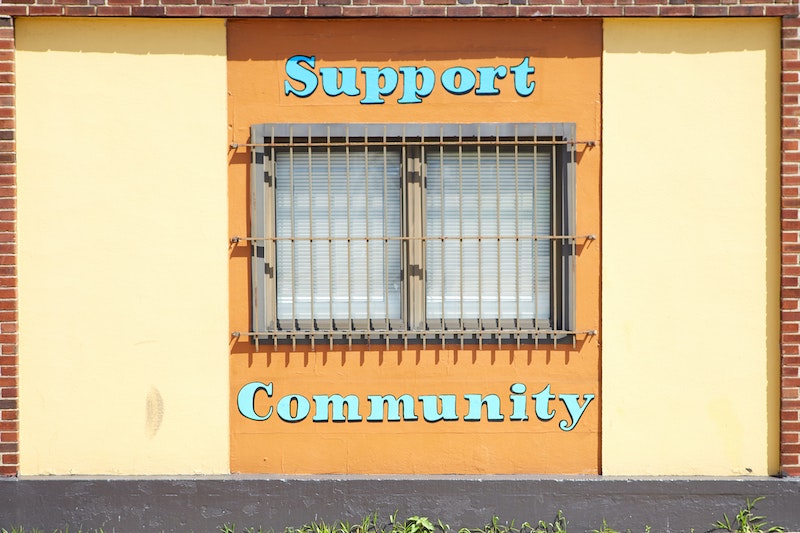How Intermediary Organizations Help QOFs Deliver Social Impact
Long before the federal government designated 8,764 low-moderate-income (LMI) census tracts as Opportunity Zones with unprecedented tax benefits for...
3 min read
 Jake DeVine
:
Sep 25, 2023 3:46:47 PM
Jake DeVine
:
Sep 25, 2023 3:46:47 PM
.png)
One of the biggest arguments against Opportunity Zone investments is whether or not they only serve to make the rich richer. Although that is a bit more of a social, rather than economic viewpoint; data shows OZs have both social AND economic benefits.
In fact, as you'll see in this article, research says Qualified Opportunity Funds (QOFs) could be the ultimate “win-win” investment for those stuck between the social vs. economic dilemma of QOFs. Even if data reveals QOFs are helping investors achieve higher ROIs and serving communities in need, it’s always important to do proper due diligence. Now, let’s jump into this article to explore this compelling research.
With the growing prominence of qualified opportunity funds, there is often the question of efficacy as it pertains to the impacted communities and members of society in need of assistance and economic development. Quite frankly, much of the discussion tends to surround a somewhat pessimistic mindset; many outside parties assert that QOFs serve the sole purpose of tax breaks and financial incentives for investors to get rich.
Recently, Novogradac collected data and found that qualified opportunity funds are exceptionally active and, according to Globest, continue to make a positive impact on qualified opportunity zones and their neighboring communities. Data collected from Novogradac found that QOFs that have raised less than $10Mn tend to be the most active; although, most equity continues to be raised by qualified opportunity funds that have already raised more than $100 million.
As of June 30, 2023, qualified opportunity funds tracked by Novogradac reported raising a cumulative of $36.1Bn in equity – of the 1,731 funds tracked, 1,330 reported a specific amount raised up until the end of Q2. It shouldn’t be surprising to find that the data shows the largest qualified opportunity funds have continued to raise the most equity in the latest period.
Funds with $500 million or more in equity funding make up roughly 26% off the total equity raised by QOFs. On the contrary, though, funds with $10 million and less only make up 6.6% of the equity raised. Interestingly, those smaller sized funds have been found to be the most active of all qualified opportunity funds, producing the most when compared to all other QOFs.
Contrary to the assertion made by those opposing qualified opportunity funds, they have been found to positively impact the communities being invested in as well as those neighboring communities for qualified opportunity zones.
Rather than being recognized solely as a tax benefit for investors, one should recognize the benefits produced from economic stimulation of regions facing hardship. As Erik Sherman from Globest notes, by the end of 2020, investment in qualified opportunity zones was over $48 billion. Areas receiving the heightened funding saw a large increase in commercial and residential development, with additional spillover into neighboring communities. Further data showed that OZ designations resulted in raising home values by 3.4% without any accompanying increases in rent for those regions.
Put simply, the positive impact of qualified opportunity zones and qualified opportunity funds are both quantifiable and recognizable – the reputation of it merely being a tax benefit for investors is dishonest.
Having noted the data pointing to fund activity and economic development for impacted regions, one should recognize that there remains some dispute regarding the selectivity of QOF operations.
More specifically, QOZs with higher median incomes, higher educational attainment and higher house prices received funding at a much higher rate than their peers with lower score attributes.
Those zones who arguably need the help the most, unfortunately, tend to receive it at a lower rate than the communities doing better comparatively within the QOZ designation. Realistically, though, this is a relatively subjective argument as those zones being invested in and impacted are still QOZs at the end of the day.
While investors reap the benefits of tax relief, the communities within QOZs are directly impacted in a positive way; plus, surrounding communities often recognize a spillover effect that helps grow the economy of neighboring groups alike.
Qualified Opportunity Funds have been getting a negative wrap for being nothing more than tax benefits for investors; although, the data collected does not particularly support that narrative. Qualified Opportunity Funds continue to have a positive impact on qualified opportunity zones and, interestingly enough, have considerable spillover into the neighboring communities and positively impacts them as well.
Collected data also shows that the smaller qualified opportunity funds continue to be the most active while the larger funds continue to raise the highest percentage of equity raising. Regardless, though, the operations and activities of these QOFs continue to have a positive impact on those distressed communities that have been deemed suitable as a QOZ.
Sure, these investors receive tax benefits from their investment into these zones; however, that shouldn’t minimize the impact they have on the communities being invested in.
If you would like to explore how you can secure OZ tax benefits and positively impact communities in need, click here to speak with our team.

Long before the federal government designated 8,764 low-moderate-income (LMI) census tracts as Opportunity Zones with unprecedented tax benefits for...

Opportunity Zone investing was created by the Tax Cuts and Jobs Act of 2017 to encourage private investment in areas that would typically be...

There are many champions and many skeptics of the Opportunity Zone (OZ) program. Will it bring lasting positive economic impact to struggling...